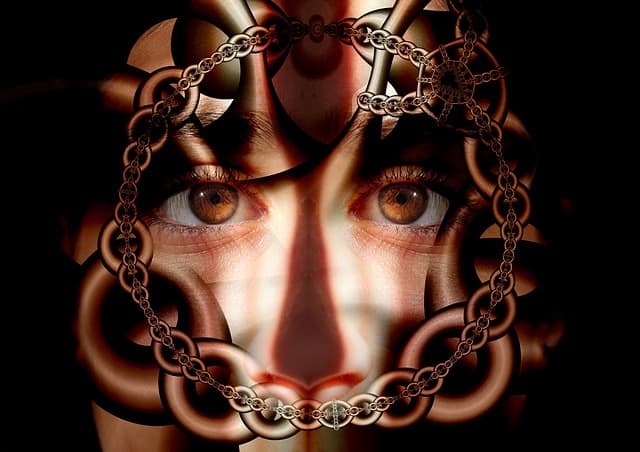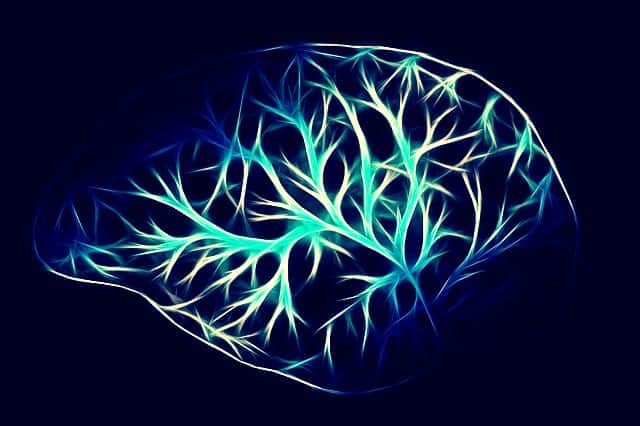Does neurofeedback work? This is the question that people have regarding this treatment for neurological conditions.
And to answer their question, yes, there have been lots of research proving that neurofeedback does work. And in addition, neurofeedback has continuously been gaining popularity as a valid treatment for certain conditions.
A New York Times article has discussed how neurofeedback has been gaining popularity in the past few years. In 2010, the International Society for Neurofeedback and Research has estimated 7,500 mental health professionals who were actively practicing neurofeedback. In addition, more than 100,000 Americans were estimated to have tried it over the past decade.
What is neurofeedback?
Canadian neurophysicist, Donald Hebb had once said, “Neurons that fire together, wire together.”
Neurofeedback is a procedure wherein a patient’s brain will be “re-trained” to function optimally, the way it was designed.
If you want to picture how neurofeedback is carried out, try imagining a scene in a movie wherein a patient has electrodes attached to their head.
Watch this video from Susan Othmer as she explains neurofeedback
During a neurofeedback session, the patient settles into a quiet space, usually, in a comfortable chair. Special sensors will then be attached to the head. These sensors will feed the brainwave patterns into a computer program.
Now, some freak out when we imagine ourselves with wires attached to our heads. It somehow paints a picture of pain or something complicated happening inside our head.
But you can kiss your worries goodbye.
Neurofeedback is actually non-invasive, so there won’t be any needles or sharp objects stuck to your scalp. Nor will there be anything that will shock your brain.
In fact, patients have commented that at the end of each session, instead of feeling pain, they usually come out more relaxed and less stressed.
So, if you are considering undergoing a neurofeedback session, don’t worry, it won’t hurt. Who knows it might be the solution to your age-old problems.
If you are still pondering on the question, does neurofeedback work, here is a rundown of the most widely known conditions that can be treated with neurofeedback:
1. Anxiety

Some days we’re as anxious as a kitten who’s lost sight of its mom
Experiencing anxiety and stress is a very common problem nowadays. Even celebrities are sharing their struggles.
The good thing is, there are ways to combat these mental health problems, and neurofeedback is one of them.
The website, FocusBand cited the possible effects of neurofeedback on stress and anxiety, and it says:
“Neurofeedback provides physiological assistance and helps people learn to change their responses to stress. With brain training, they can develop the skills they need to reduce or eliminate anxiety in their lives.”
The website explains that as one trains their brain (during the process of neurofeedback), they can actually watch their brainwaves live on an EEG computer monitor. So as they learn to reduce anxiety and increase calm, they can watch their brainwaves change. Isn’t that cool?
“With neurofeedback, you learn to recreate that state and moderate your response to stress so that anxiety is minimized and occurs less frequently,” the website says. “With sufficient training, your brain learns to maintain healthier patterns on its own more consistently. It’s like exercise for the brain.”
Neurofeedback is proven to help reduce long-term anxiety, thus, if a person is taking medications for anxiety, they will eventually wean off medication (of course, with their doctor’s supervision).
2. Post-traumatic Stress Disorder (PTSD)

Sometimes it’s difficult to tune out the triggers
People with PTSD struggle with their memories every single day. Anything related to a traumatic event in their past – sight, sound, and even smell – is already a cause of pain and struggle.
This is why neurofeedback is so important.
One of the goals of neurofeedback is to help a person with PTSD get his or her life back. According to the website, Balance Atlanta, the challenge of neurofeedback is to “teach the brain to turn off the stress response,” which is triggered when a person suffers from PTSD. But the good thing is that neurofeedback is responding positively.
“Training with neurofeedback is so effective for severe PTSD that in many cases, professionals and patients have reported that neurofeedback helped someone with PSTD “get their life back”.
Here’s how neurofeedback can help treat PTSD, according to the website:
“Neurofeedback trains the brain to produce a calm state, as well as regulate the stress response. The specific areas of the brain affected by PTSD can also be targeted and trained to produce healthier patterns.”
3. Depression

Depression, the “common cold” of mental illness
Neurofeedback is also used to treat depression. What it does, according to a wellness website, it retrains the dysfunctional brain patterns associated with depression. With this brain training, the brain is able to practice healthier patterns of mood regulation under the supervision of a qualified neurofeedback technician.
“With sufficient practice, the brain will then learn to make these healthy patterns on its own and regulate mood independently.”
4. Insomnia/Sleep Disorders

Ahhh, to actually be able to sleep
Do you suffer from lack of sleep?
One of the promises of neurofeedback is to help the brain normalize sleep. According to Center for Brain, “training brainwaves using neurofeedback to increase slow brainwave activity or to increase specific EEG activation patterns appears to help the brain normalize sleep.”
“Based on reports from a large number of licensed health professionals, evidence shows that training the EEG impacts sleep regulatory mechanisms, and people sleep better. Since sleep is complex and involves many systems, it is not possible to suggest that sleep problems always improve as a result of neurofeedback. Yet, clinicians say they routinely expect positive changes to occur in sleep patterns after appropriate training for a large percentage of their clients.”
5. Migraines

When you just want to hide in a dark room and avoid life
Although there have been several studies exploring biofeedback as a treatment for migraines, only a few studies exist on using neurofeedback methods to treat migraines.
A study cited in BioMedCentral mentioned that neurofeedback has the ability to treat migraines. Based on the study, “all combined neuro and biofeedback interventions were effective in reducing the frequency of migraines with clients using medication resulting in a more favorable outcome than just medications alone.”
According to the website, “these non-invasive interventions may show promise for treating treatment-refractory migraine and for preventing the progression from episodic to chronic migraines.”
6. Addiction

Break free from the chains of addiction
If you are suffering from addiction of any kind, neurofeedback may the therapy you need to overcome it. Through retraining your brain, addiction, which is considered a brain disorder, will be healed from your addiction.
According to Addiction.com, neurofeedback can have a calming effect on the brain, or it can help wake the brain up.
“Neurofeedback can help modulate under-arousal — falling asleep, or feeling depressed or weepy — and over-arousal—aggression, heart palpitations and teeth-grinding.”
The website says that over-arousal affects alcoholics. On the other hand, under under-arousal issues bother methamphetamine and other stimulant addicts.
7. Bipolar Disorder

Remove the shackles so you can once again trust your brain
People with bipolar disorder are in a difficult place. Their moods are two extremes. When they are in their happy mood, it can be too much. It is considered a period of mania. But when they are sad, it often results in depression.
The role of neurofeedback for people with bipolar disorder is that it teaches the brain to maintain a consistent state.
A wellness website says that through learning self-regulation, a person will be able to achieve mood stabilization.
“Bipolar clients undergoing neurofeedback training report less susceptibility to mood swings, increased ability to focus, and reduced anger. Their ability to function increases as they find themselves less reactive and increasingly able to respond and act appropriately.”
8. Chronic Pain

Imagine being pain-free
One of the most difficult conditions that one has to undergo is experiencing chronic and constant pain. A lot of people from all over the world are suffering from chronic pain. And most of the time it is a result of another condition or disease.
Imagine having to endure pain every day of your life …which is why neurofeedback is such a helpful therapy.
According to Brain Blogger, neurofeedback can have a direct influence on the processing of pain.
“By learning self-regulation of brain functions, a patient can modify the electrical activity of areas of the brain involved in pain processing, pain perception, or pain memory. This allows the reduction or even elimination of pain, along with many of its co-morbidities, including depression or anxiety.”
Another procedure where neurofeedback can modulate pain, according to the blog, is the regulation of the emotional component of pain. This means that neurofeedback training will be applied to a certain region of the brain which is responsible for feeling pain. This is called the frontal cortex.
“Neurofeedback training applied to this region of the brain has been found to be able to induce changes in pain affect in patients with acute and chronic pain syndromes, leading to an increased pain tolerance.”
9. Obsessive Compulsive Disorder

Wouldn’t it be nice if this weren’t going through your mind thousands of times a day
According to the National Institute for Mental Health, people with OCD or Obsessive Compulsive Disorder have uncontrollable, reoccurring thoughts (obsessions) and behaviors (compulsions) that he or she feels the urge to repeat over and over.
PsychCentral estimates that 1 in 43 Americans suffers from this condition. If you have this condition or know someone who has this condition, you will recognize how hard it is to deal with yourself or with other people.
There are a lot of therapies that can be undergone by a person with OCD. A wellness website recognizes neurofeedback as one of the many treatments for OCD.
“People with OCD relate that, after neurofeedback training, they do not really need to make an effort to stop unwanted repetitive thoughts and behaviors. They say that their minds are much quieter. With neurofeedback training, the brain learns to respond to situations in a more conventional and healthy manner.”
10. Epilepsy

Reducing epileptic seizures can only enhance lives
Mayo Clinic describes epilepsy as a disorder in the central nervous system.
When a person suffers from epilepsy, the brain activity of that person becomes abnormal. This causes seizures or periods of unusual behavior, sensations, and sometimes loss of awareness.
However, unlike before, most people can now become seizure-free through medication.
Recently, neurofeedback therapy has been pointed out as one of the possible treatments for epilepsy. And a study published in the National Center for Biotechnology Information (NCBI) supports this claim.
It says, “it is possible to train the brain to de-emphasize rhythms that lead to generation and propagation of seizure and emphasize rhythms to make seizures less likely to occur.”
In fact, with the latest improvements in EEG and neurofeedback, it is highly likely to eliminate seizures.
11. Nightmares
 Positive thinking can help reduce those disturbing nightmares
Positive thinking can help reduce those disturbing nightmares
Most of us have experienced having nightmares when we were kids … and it is not a very good experience. According to Statista.com, most nightmares occurs between the ages of 3 to 6 and then decreases when we reach the ages of 6 to 12. But nightmares don’t end in childhood. Some people experience them throughout adulthood, especially when they have a traumatic experience. Recurring nightmares, both for children and adults, can have negative effects on one’s mental health. It usually causes stress and anxiety.
The good news is that neurofeedback can actually help lessen these nightmares.
According to Advance Neurotherapy, a quantitative Electroencephalography (EEQ) brain map can identify where in the brain is causing night terrors. Once this has been identified, it will target these during neurofeedback sessions.
“The brain will naturally learn to function more healthily and efficiently, correcting what causes the nightmares and night terrors to occur. After several neurofeedback sessions, the child will begin to sleep much easier as neurofeedback reduces the frequency and intensity of night terrors, and improves overall quality and duration of sleep.”
12. Bedwetting

Bedwetting is not only for kids, it also happens to adults
Did you know that not only children suffer from bedwetting? The Simon Foundation for Continence has noted that around 26 million American adults are affected by urinary incontinence or the loss of bladder control. This condition usually results in bedwetting. According to an article in NBC News, bedwetting usually occurs as a result of a “secondary condition (enuresis) that is developed during adulthood due to a neurological disorder, prostate obstruction, diabetes, overactive bladder, complications from childbirth or other medical issues.”
A study cited in News Wise showed positive results in using neurofeedback to treat bedwetting:
“Eleven patients received neurofeedback training for five to seven sessions, 20 minutes per session, twice a week. Bedwetting stopped for all 11 of these neurofeedback patients and has not recurred for at least 12 months.”
Now, that’s amazing!
13. Bruxism or Teeth Grinding

Do you experience teeth grinding when you’re trying to concentrate?
Bruxism is the habitual or involuntary grinding of teeth. Although this is considered a sleep-related condition, it can also happen when one is awake especially when they are trying to concentrate. According to the Mayo Clinic, if bruxism happens more frequently, it may lead to jaw disorders, headaches, damaged teeth, and other problems.
Good thing neurofeedback can treat bruxism. How?
According to Bruxism.org, biofeedback works on the premise that bruxers can ‘unlearn’ their behavior when a stimulus makes them aware of their jaw muscle activity.
“It is thought that the patient can be trained to control the unwanted jaw muscle activities through auditory and visual feedback.”
However, according to the website, it should also be noted that these methods, although they can be useful for daytime bruxism, their efficacy is doubtful in patients with sleep bruxism.
14. Sleepwalking

Can you imagine yourself sleepwalking?
Some people think that sleepwalking is often linked to something paranormal (like a zombie) … but according to the National Sleep Foundation, this is actually “a behavior disorder that originates during deep sleep and results in walking or performing other complex behaviors while asleep.” And the worst thing that can happen is that the sleepwalker may perform inappropriate behavior such as urinating in closets or become violent.
A wellness website claims that “Neurofeedback provides a long-lasting, noninvasive treatment without the side effects (sleepwalking, binging at night with no memory, lethargy in the mornings, etc.) often reported with some sleep aids.”
Are You Ready To Try If Neurofeedback Does Work?
Although there have been some controversies involving neurofeedback, a lot of practitioners are now more open to the practice since their patients are seeing positive effects. Studies have been conducted to explore the ability of an EEG biofeedback to treat certain conditions, which have shown positive results. Our culture is trying to reduce the amount of prescription drug intake and Neurotherapy may be the avenue that will work for you.
